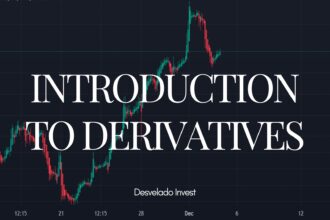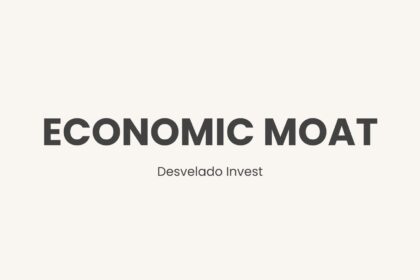Written By: Eklavya Guneja
Ever wondered what those finance folks mean when they talk about derivatives? Don’t worry; you’re not alone. Let’s stroll through the world of derivatives and see how they play a role in our financial markets, all explained in simple terms.
What’s a Derivative, Anyway?
Imagine you and your friend Raj are huge fans of mangoes. Mango season is still a few months away, but you both are excited about it. Raj thinks the price of mangoes will go up, while you believe they’ll stay the same. To settle this, you make a deal today about buying mangoes in the future at a price you agree on now. This agreement is a simple way to understand a derivative.
A derivative is a financial contract whose value is based on the performance of an underlying asset. This asset could be stocks, bonds, commodities like gold or oil, etc.
Types of Derivatives

Let’s explore the four main types of derivatives.
Forwards: A forward contract is a private agreement between two parties to buy or sell an asset at a specified price on a future date.
Example: Suppose Priya runs a sweet shop and wants to lock in the price of sugar to avoid future price hikes. She makes a deal with a sugar supplier to buy sugar at ₹40 per kg, three months from now. This agreement is a forward contract.
Futures: Similar to forwards but traded on an exchange, which means they’re standardized and regulated.
Example: Suppose you anticipate that the stock price of Tata Steel will rise in the next three months. You enter into a futures contract to buy shares of Tata Steel at ₹500 per share three months from now. Regardless of the market price at that future date, you have agreed to purchase the shares at ₹500. If the price rises to ₹550, you benefit by getting the shares cheaper than the market price.
- How Companies benefit using Futures: Companies use futures contracts to protect themselves from price fluctuations in raw materials or currencies. For instance, a coffee manufacturer like Café Coffee Day might use futures to lock in the price of coffee beans. By securing a set price today for beans they will purchase in the future, they can stabilize their production costs and pricing, shielding themselves from market volatility.
Options: An option gives the buyer the right, but not the obligation, to buy or sell an asset at a set price on or before a certain date.
Example: Imagine you pay a premium of ₹200 for an option to buy Infosys shares at ₹1,000 per share anytime in the next month. This is called a “call option”. If Infosys’ stock price rises to ₹1,100, you can exercise your option to buy at ₹1,000 and potentially sell at the higher market price, making a profit of ₹100 per share (minus the ₹200 premium). If the stock price stays below ₹1,000, you can choose not to exercise the option, limiting your loss to the ₹200 premium paid.
- How Companies benefit using Options: Companies utilize options to hedge against potential losses while keeping the opportunity for gains. For example, Maruti Suzuki might purchase options to buy steel at a fixed price. If steel prices soar, Maruti Suzuki can exercise the option and buy at the lower price, saving on production costs. If prices drop, they can let the option expire and purchase steel at the cheaper market rate, benefiting from the lower prices without being locked into a higher cost.
Swaps: A swap is an agreement between two parties to exchange financial obligations, like interest rates or currencies.
Example: Suppose two friends, Ravi and Sunita, have loans. Ravi has a loan with a fixed interest rate, and Sunita has one with a variable rate. They agree to swap interest payments because Ravi thinks rates will drop, and Sunita prefers stability. This way, they both get what they want.
Why Are Derivatives Important?
Derivatives might seem complex, but they serve vital purposes in finance:
- Risk Management: Companies use derivatives to hedge against price changes in commodities, currencies, or interest rates. For instance, an airline might use futures contracts to lock in fuel prices, protecting itself from sudden price spikes.
- Price Discovery: Derivatives markets help determine the future price of assets based on supply and demand expectations.
- Access to Assets or Markets: Investors can gain exposure to assets without owning them outright, which can be more cost-effective or practical.
Let’s take a case to understand how and why companies use it. (data might not be accurate as this is just to explain the concept.)
To understand how derivatives play a crucial role in a company’s operations, let’s dive into a story about Tata Motors, one of India’s leading automobile manufacturers. We’ll see how they use derivatives to manage risks, make informed decisions, and access markets efficiently.
Facing Multiple Challenges
Tata Motors deals with various challenges that can impact its profitability:
- Commodity Price Fluctuations: The company requires large quantities of raw materials like steel and aluminum. Prices of these commodities can be volatile.
- Currency Exchange Risks: Tata Motors exports vehicles worldwide, dealing with multiple currencies like the US dollar and euro.
- Investment Opportunities: The company seeks efficient ways to invest surplus funds without excessive risk.
1. How Risk Management helps them?
Protecting Against Commodity Price Fluctuations
Concerned about the rising prices of steel, Tata Motors decides to use futures contracts to lock in current prices for future purchases.
- What They Do: They enter into futures contracts to buy steel at ₹50,000 per ton for delivery in six months.
- Benefit: This shields them from potential price hikes. Even if the market price rises to ₹55,000 per ton, Tata Motors still pays the lower, agreed-upon price, stabilizing production costs.
Hedging Currency Risks
With significant earnings in foreign currencies, fluctuations in exchange rates can affect profits.
- What They Do: Tata Motors uses currency options (basically options contracts for currencies) to hedge against the rupee strengthening against the dollar.
- Benefit: If the rupee strengthens, making each dollar earned worth fewer rupees, the option allows them to exchange at a more favorable rate. This ensures predictable revenue from international sales.
2. How Price Discovery helps them?
Making Informed Purchasing Decisions
Tata Motors monitors the futures markets to gauge where commodity prices are heading.
- What They Do: They observe that futures prices indicate aluminum costs might drop in the next quarter.
- Benefit: Knowing this, they decide to delay large aluminum purchases. When prices drop, they buy at the lower rate, saving money on production costs.
3. How Access to Assets or Markets helps them?
Efficient Investment Strategies
Looking to invest surplus cash reserves, Tata Motors wants exposure to the stock market without managing individual stocks.
- What They Do: They purchase index options linked to the Nifty 50.
- Benefit: This gives them the potential to profit from overall market movements without the complexity of holding multiple stock positions. It’s a cost-effective way to invest in the market’s growth.
(Company’s name is used only for illustration purposes)
Index Options vs. Equity Options
Now, let’s talk about options linked to stock indices and individual stocks.
Equity Options
What Are They? Options based on individual company stocks.
Example: If you buy an option to purchase shares of Tata Motors at ₹400 per share, you’re dealing with an equity option.
Index Options
Options based on a stock market index like the Nifty 50 or Sensex.
Example: Purchasing an option that gives you the right to buy into the Nifty 50 index at a certain level is an index option.
Key Differences:
Underlying Asset: Equity options are based on single stocks, while index options are based on a group of stocks representing a market or sector.
Risk and Diversification: Index options can offer diversification because they represent a broader market, potentially reducing the impact of a single company’s performance.
Volatility: Individual stocks can be more volatile than indices, which means equity options might have higher risk and reward potential compared to index options.
Derivatives might sound intimidating at first, but at their core, they’re tools that help people and companies manage risk, speculate on future price movements, and access different financial markets. By understanding the basics, you’re now better equipped to see how these financial instruments play a role in everything from the price of your groceries to the operations of big companies in India.
Next time you hear someone mention derivatives, you can share your newfound knowledge or even explain it using simple examples like our mango deal or Priya’s sweet shop. Finance doesn’t have to be complicated, and with a bit of curiosity, anyone can grasp these concepts.
Happy learning, and here’s to making finance-friendly and approachable!






